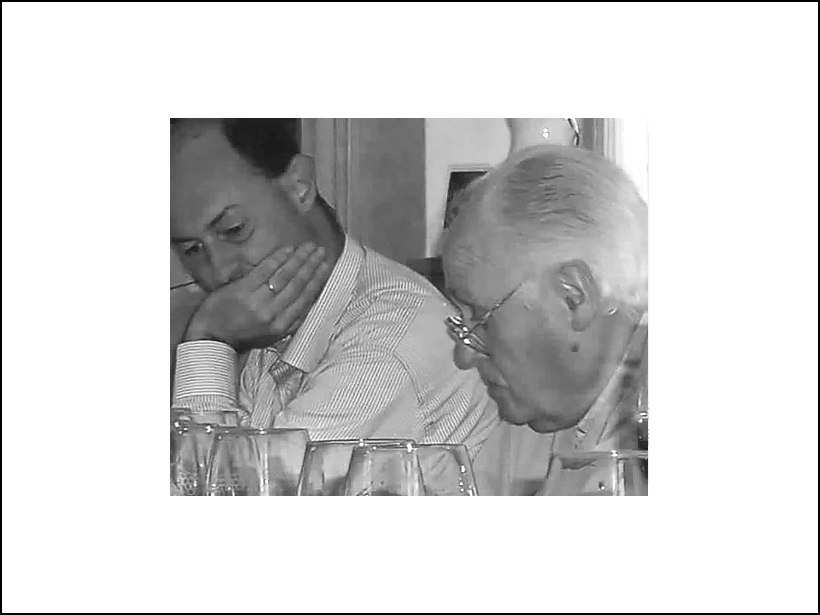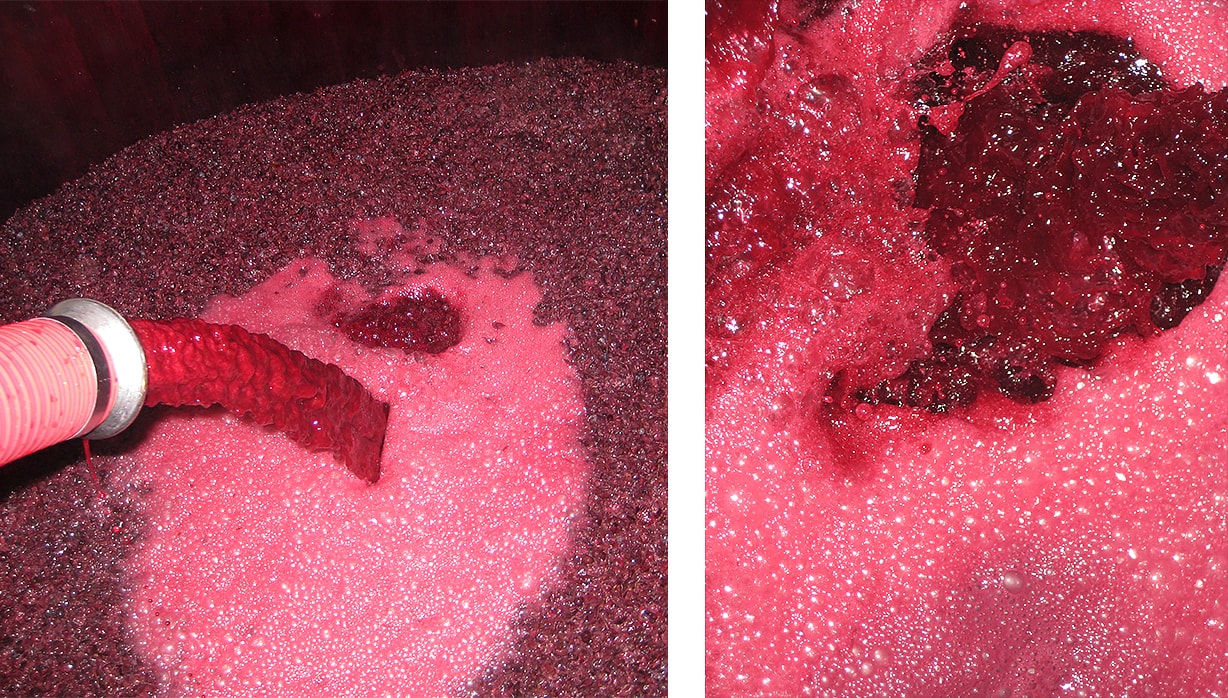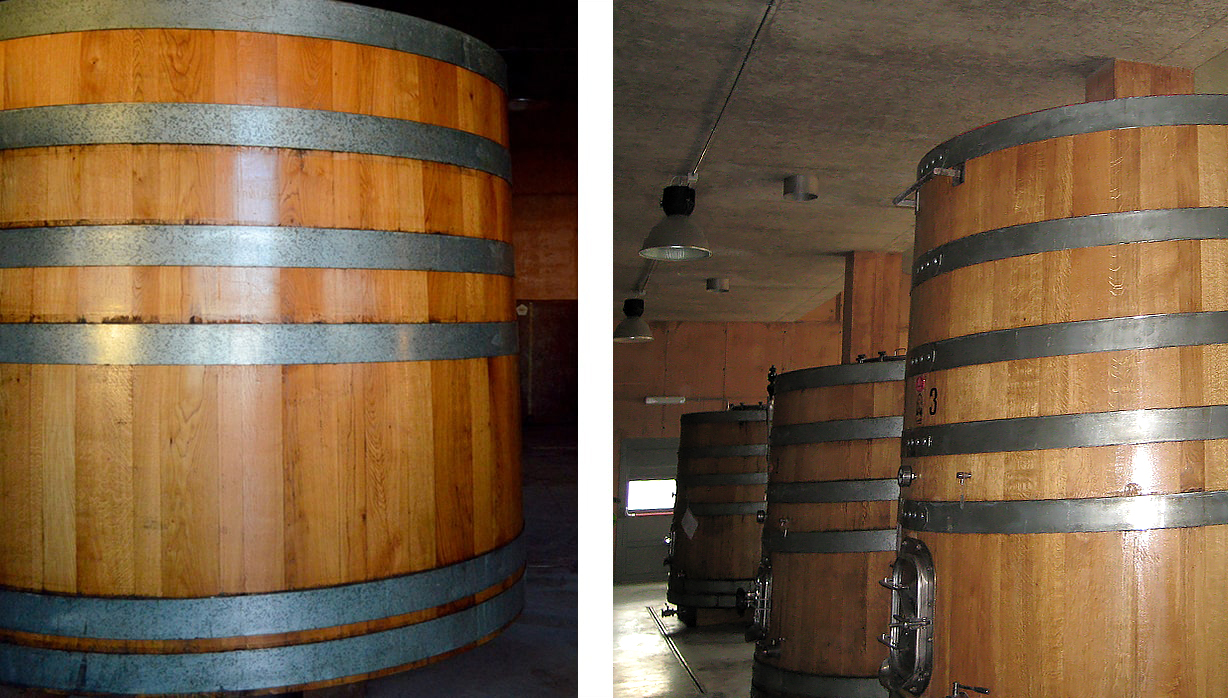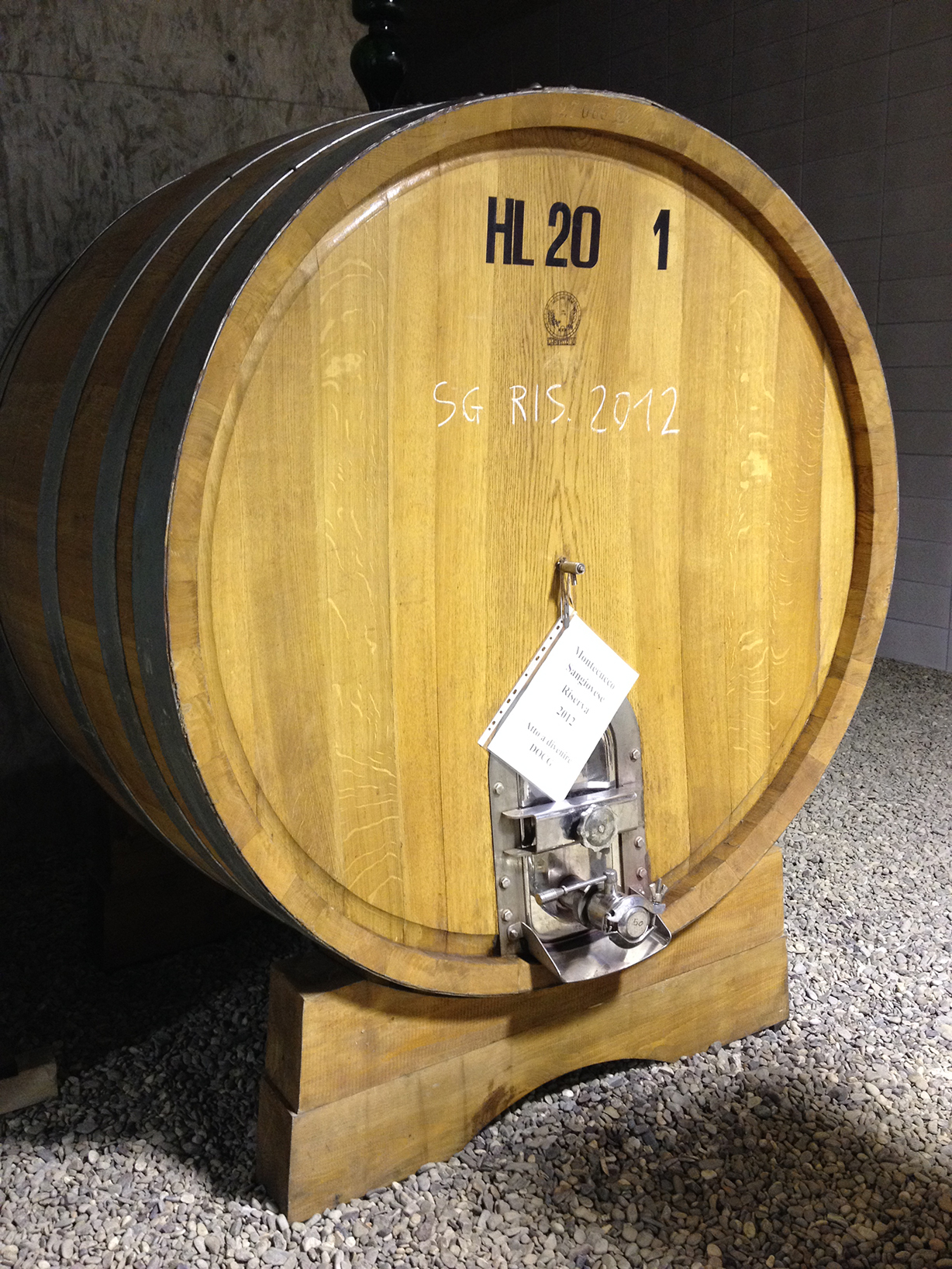Back in Tuscany from his Piemontese experience, Daniele meets the man he considers is Maestro: Giulio Gambelli. Together they work in Montalcino, at Case Basse, Gianfranco Soldera’s estate and in Mercatale Valdarno at Fattoria Petrolo, owned by the Sanjust family. Daniele learns with Gambelli that the wine is born in the vineyard, from soil, sun, rain and wind. He also learns how to care for each plant so that, in the most natural way, it gives its best, the best grapes. In Campinuovi Daniele’s dream comes true: making a wine in the manner he learnt from Giulio.
– Giulio Gambelli (1925-2012) with Daniele Rosellini during a Montecucco wine tasting.
The work in the cellar follows the same philosophy: follow the “birth” of the wine in the most natural possible way. Winemaking is performed separately for each grape variety and plot, so that we can respect and follow the characteristics of each one. Fermentations start spontaneously with indigenous yeasts and take place in Slavonian oak vats. The young wine is kept on fine lees in 70 hl wooden vats. The malolactic fermentations starts spontaneously. We let the wine age for at least one year before its release (the Riserva ages one more year in 20 hl wooden vat). We do neither fine nor filter the wine. Sulphites levels are moderate.







